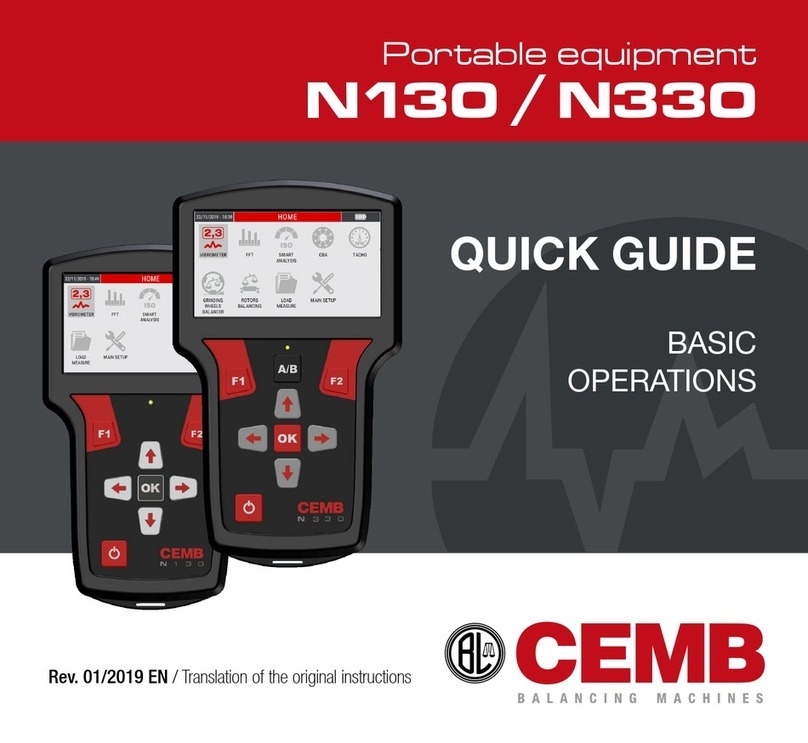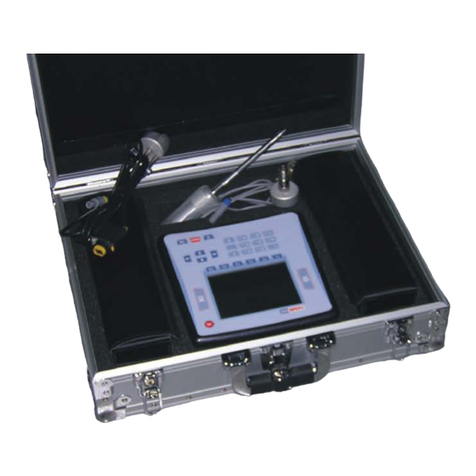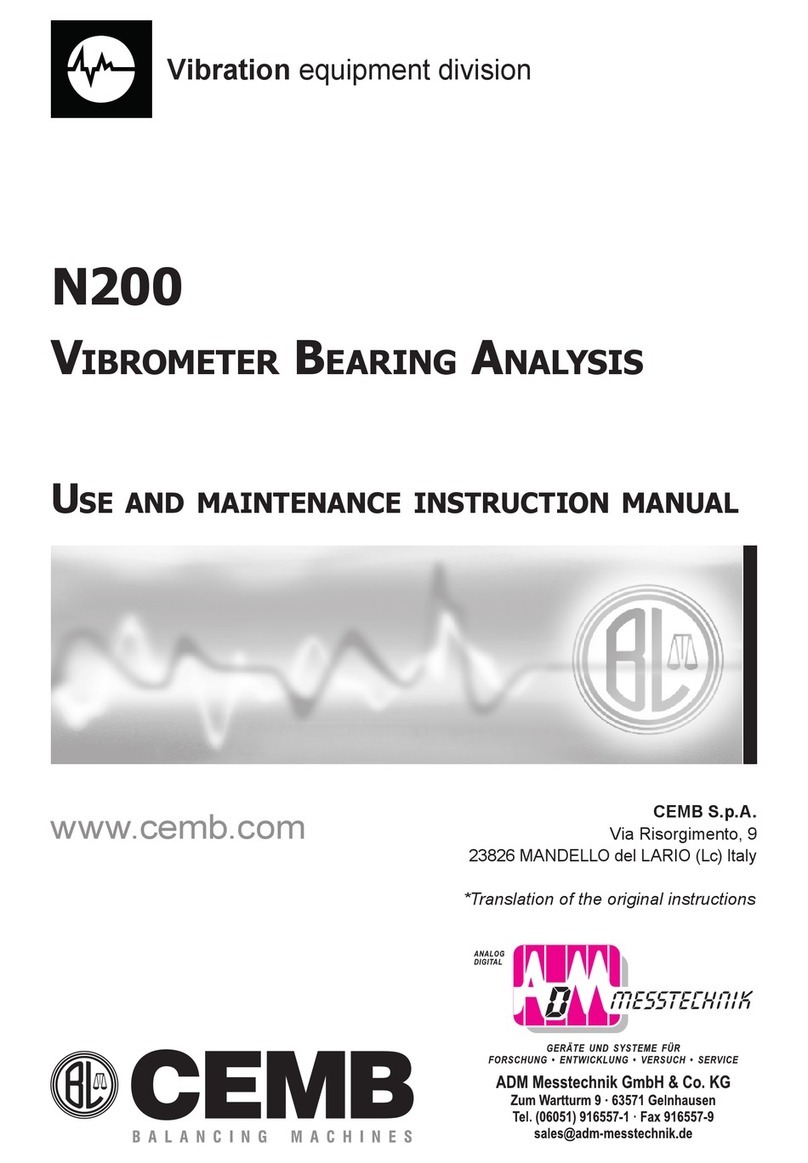
2 Index
Measure setup.............................................. ……………………………5 –3
Take screenshot............................................ ……………………………5 –3
Chapter 6 -FFT mode –Fast Fourier Transform
Spectral analysis (FFT) –measurement screen .................................…….6 –1
Measurement of a FFT spectra .................................................…………….6 –2
Management of a the X-Y axis of the graph...............................……………6 –3
MENU function...................................................…………………………………..6 – 3
Cursor mark .......................................... ……………………………………6 –3
Peak list ........................................……………………………………………6 –5
Save measure ............................................... ……………………………6 – 5
Open measure.............................................. ……………………………6 –5
Measure setup.............................................. ……………………………6 –5
Autoscale.............................................. ……………………………………6 –5
Take screenshot ........................................... ……………………………6 –5
Chapter 7 -“SMART ANALYSIS”mode
“SMART ANALYSIS” –measurement screen ..................... ……………………7 – 1
Setting the type of machine to be analyzed ......................................……7 – 2
Setup “CUSTOM SMART ANALYSIS”...................................................……7 – 4
Setting the rotation speed detecting mode ............. ……………………………7 – 5
Photocell....................................................... ……………………………7 –5
Manual entry ........................................................ ……………………7 – 5
Auto detection.............................................. ……………………………7 – 6
Detection of a “SMART ANALYSIS”measure .....................................……7 –7
MENU function.................................................. ……………………………………7 – 8
Save measure ............................................... ……………………………7 –8
Open measure.............................................. ……………………………7 –8
Change machine setup ......................................... ……………………7 –8
Change speed detection setup…… ............................................. 7 –8
Take screenshot ........................................... ……………………………7 –8
Chapter 8 -“SPINDLE ANALYSIS”mode
“SPINDLE ANALYSIS” –measurement screen ................... ……………………8 –1
Setting the type of spindle to be analyzed......................................... ……8 –2
Detection of a “SPINDLE ANALYSIS”measure....................................……8 –5
MENU function.................................................. ……………………………………8 –7
Save measure ............................................... ……………………………8 –7
Open measure.............................................. ……………………………8 –7
Change spindle setup ........................................... ……………………8 –7
Take screenshot ........................................... ……………………………8 –7
































